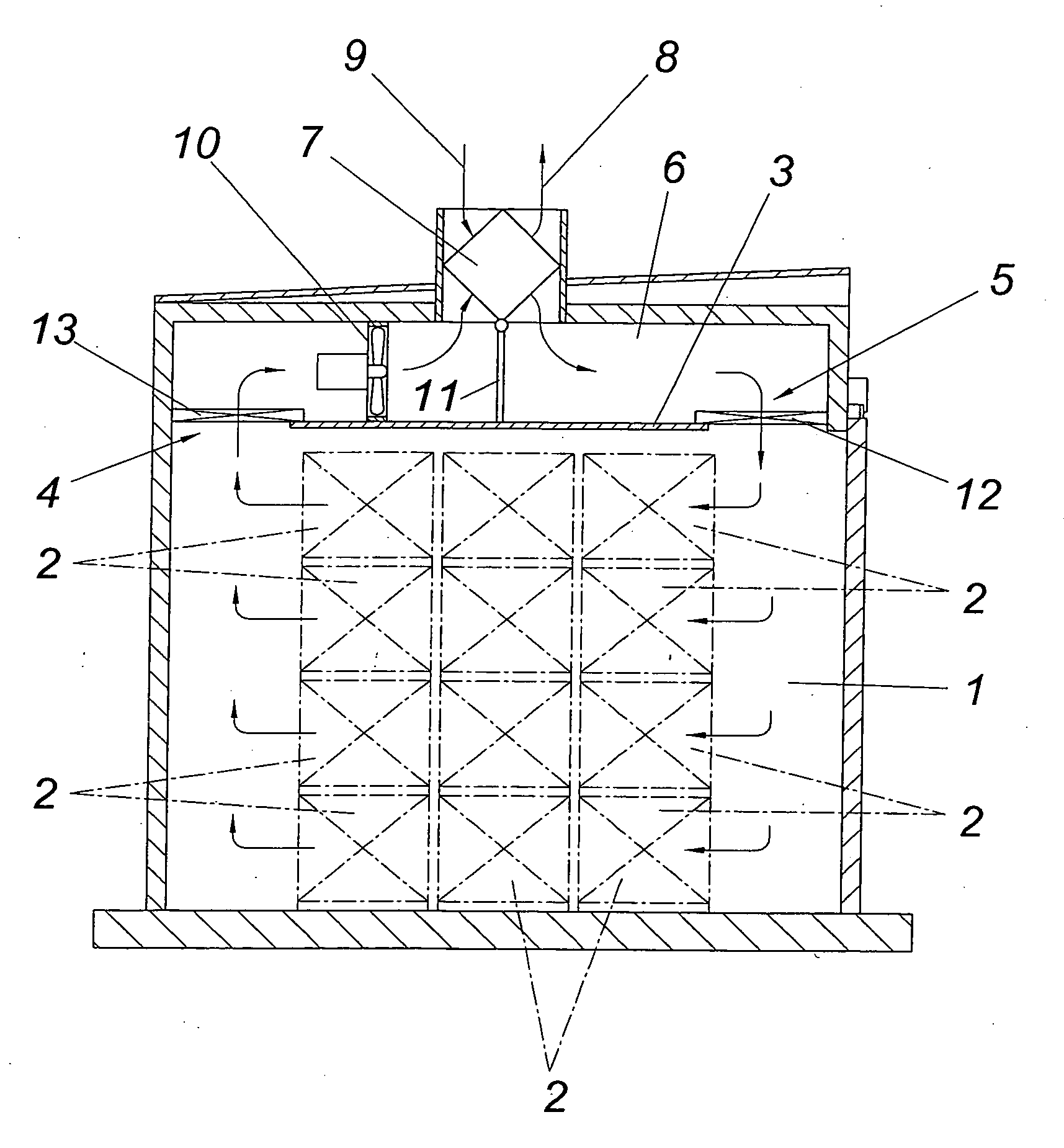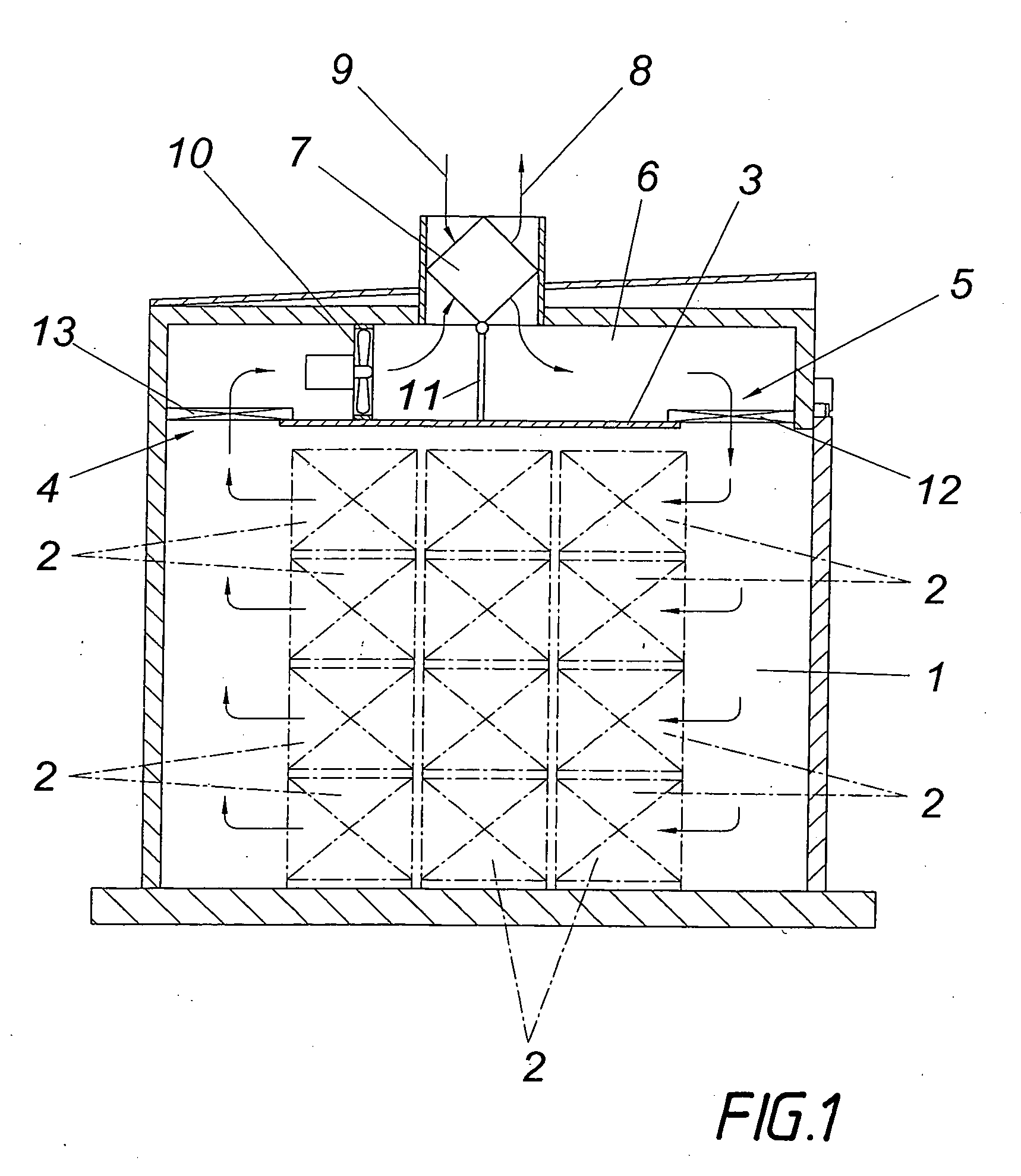Method for Drying Wood Combined Into Stacks
a technology of stacking and drying wood, which is applied in the direction of drying, heating apparatus, lighting and heating equipment, etc., can solve the problems of corresponding high energy expenditure for the circulatory flow of drying gas, and achieve the effects of short drying time, low energy input, and rapid drying
- Summary
- Abstract
- Description
- Claims
- Application Information
AI Technical Summary
Benefits of technology
Problems solved by technology
Method used
Image
Examples
Embodiment Construction
[0010]The device shown for drying wood comprises in conventional manner a drying chamber 1 in which the wood to be dried in stored in stacks 2 depicted by dotdash lines. Above the storage area for the wood stacks 2 the drying chamber 1 is provided with an intermediate ceiling 3 which forms a flow channel 6 connecting the outlet 4 for the drying gas flowing through the storage area with the inlet 5. This flow channel 6 is connected to a cross-flow heat exchanger 7 via which waste gas 8 is removed from the storage area and fresh gas 9 is supplied. Fans 10 distributed over the length of the drying chamber 1 are provided for conveying the drying gas through the storage area. With the aid of at least one control valve 11 disposed in the flow channel 6, the ratio between the amounts of waste gas or fresh gas on the one hand and the fraction of the drying gas guided in circulation through the flow channel 6 on the other hand can be selected depending on the drying process. In the closed po...
PUM
 Login to View More
Login to View More Abstract
Description
Claims
Application Information
 Login to View More
Login to View More - R&D
- Intellectual Property
- Life Sciences
- Materials
- Tech Scout
- Unparalleled Data Quality
- Higher Quality Content
- 60% Fewer Hallucinations
Browse by: Latest US Patents, China's latest patents, Technical Efficacy Thesaurus, Application Domain, Technology Topic, Popular Technical Reports.
© 2025 PatSnap. All rights reserved.Legal|Privacy policy|Modern Slavery Act Transparency Statement|Sitemap|About US| Contact US: help@patsnap.com


